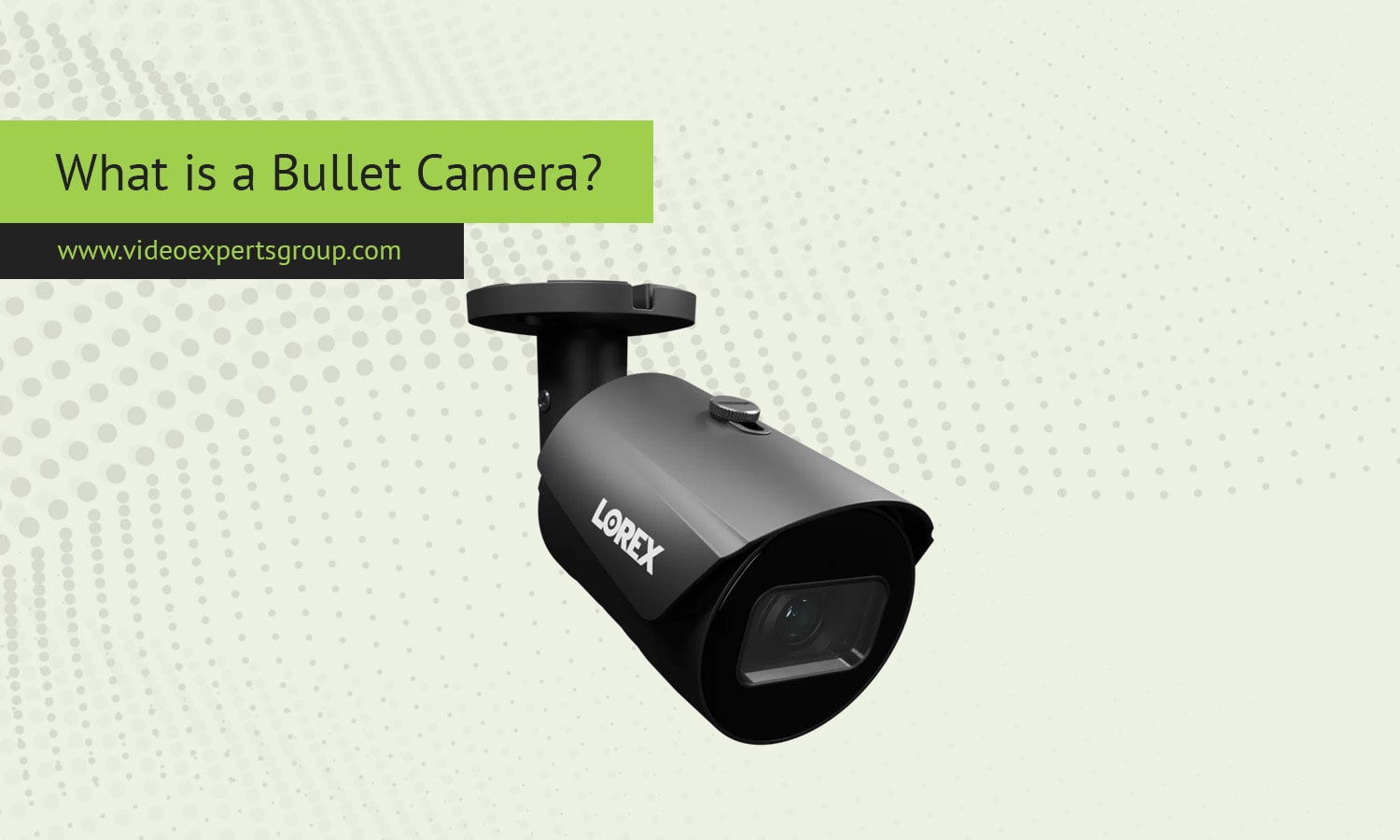Bullet cameras are a popular type of security camera recognizable by their long, cylindrical shape, which resembles a bullet casing. These cameras are widely used in both residential and commercial settings, particularly for outdoor surveillance. Known for their strong visual deterrent effect, bullet cameras are typically installed in visible locations to help deter criminal activity. Their design is optimized for monitoring specific areas, such as entrances, perimeters, or parking lots, providing clear and focused footage.
Meaning
A bullet camera is a type of surveillance camera characterized by its elongated, cylindrical shape. These cameras are typically mounted on walls or ceilings, with the lens facing directly towards the area to be monitored. Bullet cameras are designed to focus on a specific field of view, making them ideal for covering long distances or narrow areas, such as driveways, entrances, or hallways.
Bullet cameras come in various sizes and can be equipped with different types of lenses, ranging from wide-angle to telephoto. They are often housed in weatherproof casings, making them suitable for outdoor use, where they can withstand harsh environmental conditions. Some models are also equipped with infrared (IR) LEDs, allowing for clear night vision footage even in complete darkness.
How Does a Bullet Camera Work?
A bullet camera captures video footage through its lens, which then passes through an image sensor that converts the light into an electronic signal. This signal is processed and recorded by the camera’s internal system or sent to a connected recording device, such as a digital video recorder (DVR) or network video recorder (NVR). Depending on the camera’s features, the footage can also be transmitted to a remote viewing platform, such as a smartphone app or a computer, via the internet.
Most bullet cameras are fixed in position, meaning they have a set field of view that doesn’t change. However, the lens type can vary, with some models offering zoom capabilities for adjusting the focus. Bullet cameras often include IR LEDs around the lens, which emit infrared light to illuminate the monitored area at night, enabling the camera to capture clear images even in low-light conditions.
When to Use a Bullet Camera?
Bullet cameras are best suited for situations where you need to monitor a specific area with a clear line of sight. Common scenarios where bullet cameras are used include:
- Perimeter Security: Bullet cameras are ideal for monitoring the perimeter of a property, such as fences, gates, or driveways. Their focused field of view allows for detailed surveillance of long, narrow areas.
- Entrances and Exits: Installing bullet cameras at entry and exit points helps capture clear footage of individuals or vehicles entering and leaving the premises, providing valuable evidence in case of an incident.
- Parking Lots: Due to their ability to cover long distances, bullet cameras are often used to monitor parking lots, ensuring that vehicles and pedestrian activity are recorded clearly.
- Outdoor Surveillance: The weatherproof design of bullet cameras makes them a reliable choice for outdoor surveillance in various weather conditions, including rain, snow, and intense sunlight.
- Industrial and Commercial Properties: Bullet cameras are commonly used in industrial and commercial settings where large areas need to be monitored, such as warehouses, factories, and construction sites.
Advantages and Disadvantages
Advantages:
- Focused Field of View: Bullet cameras are designed to monitor specific areas, providing clear and detailed footage of the targeted location.
- Long-Range Coverage: With their ability to cover long distances, bullet cameras are ideal for monitoring large outdoor areas, such as parking lots or perimeters.
- High Visual Deterrence: The conspicuous design of bullet cameras serves as a strong visual deterrent, discouraging potential intruders or criminals from targeting the monitored area.
- Weatherproof and Durable: Bullet cameras are typically housed in sturdy, weatherproof casings that protect them from environmental factors, making them suitable for outdoor use.
- Easy Installation: Bullet cameras are generally easier to install than other types of cameras, as they can be mounted on walls or ceilings with minimal adjustments needed.
Disadvantages:
- Limited Field of View: Unlike dome cameras, bullet cameras have a fixed field of view, which means they can only monitor a specific area and may require multiple cameras to cover a large space.
- Vulnerability to Tampering: Due to their exposed design, bullet cameras are more susceptible to tampering or vandalism, especially if installed within reach.
- Obtrusive Appearance: While their design can act as a deterrent, bullet cameras are more noticeable and may not blend in as seamlessly with the environment as other camera types, such as dome cameras.
- Potential Glare Issues: Bullet cameras installed in areas with strong lighting may experience glare, which can affect the quality of the footage. Some models include features to reduce glare, but this can add to the cost.
Bullet cameras are a highly effective solution for targeted surveillance, particularly in outdoor and long-range applications. Their strong deterrent effect, combined with their durability and focused coverage, makes them a popular choice for securing residential, commercial, and industrial properties. However, their limitations in field of view and potential vulnerability to tampering should be considered when selecting the right camera for your security needs.
















